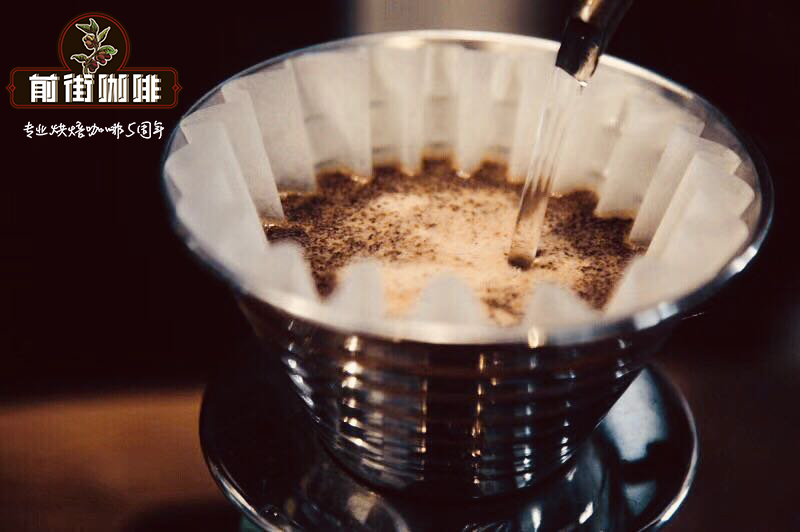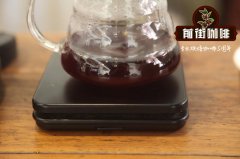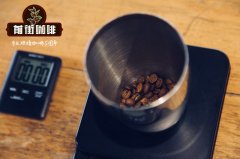What do you think of coffee flavor wheel? what is the basis of coffee flavor wheel?

Professional coffee knowledge exchange more coffee bean information please follow the coffee workshop (Wechat official account cafe_style)
Four Barrel Coffee, who describes the flavor of their Rwandan Simbi coffee as "the bumper label of an old white Mustang convertible, orange and nectarine peel left under the passenger seat", has no idea what Four Barrel gourd is selling unless every bean baker knows what medicine it sells. This is why the flavor wheel of SCAA, the American boutique coffee association, was born. The original prototype of the flavor wheel was born in 1995, and in 2016 SCAA updated and compiled the vocabulary of coffee flavor description to help people translate their subjective feelings about coffee into an objective and acceptable description.
In the 2016 SCA Chronicle, Emma Sage, the association's coffee science manager, and Hanna Neuschwander of the World Coffee Research Institute take you to explore the scientific basis behind the new flavor wheel. The ultimate goal of this project is to understand the overall quality of coffee in a completely different way than cup testing. This is quantifiable and will not make much difference even for most cup testers who have done taste correction.
Despite intensive cup test certification training, it was reflected in the first round of tests that these sensory experts could actually drink more flavor than these certified cup testers. After tasting 13 Colombian coffees, the tester group used 59 words to describe the flavor, while the sensory experts group used 92 words to describe the flavor, and reached a 100% consensus on these descriptions. This proves that no matter how rigorous the cup testing process is, it cannot beat the assistance of science.
In order to officially start the experiment, we have made some basic preparations. At Kansas State University, five sensory scientists spent 150 hours analyzing 105 coffee samples from 14 countries. In order to avoid the interference of the difficult description of the cup flavor, these flavors will be matched to the specific taste perception.
For example, the BlackBerry will not be described as a berry grown on the mountain walls of Argentina, and as an appetizer at a lavish dinner, BlackBerry should be described as the realistic description of Smuckers's BlackBerry jam. These specific reference words allow cup testers to measure and quantify the strength of each flavor. After 99 words have been identified, another team of sensory scientists will confirm them.
To find words that match the 99 flavor descriptions on the flavor wheel, SCAA and the University of California, Davis, gathered sensory scientists and coffee industry experts to string them together. As a result, these words are divided into nine categories in the flavor wheel (sweetness, flowers, fruit, etc.).) A lot of complex graphics are used, and each category extends more second-and third-tier words that describe a particular flavor. There will be no such unrealistic words as the nectarine skin described by Four Barrel or the car bumper label.
Although many scientific methods seem to be used to describe the flavor of coffee, this does not stifle the space that the baker can play. Compiling flavor words is only the first step, and the goal is to describe the flavor in the same language. Through a deeper study of coffee varieties, and understand the reasons for the quality. These words are the beginning of an experiment to find out whether certain chemicals in coffee reflect specific flavors or are the result of factors that are more affected by the environment.
Once the congenital problem is solved, the acquired problem will also be solved, that is to say, farmers can be identified in a scientific way to the farming stage, highlight a specific flavor when planting, and open up a new way of planting. This will have a huge impact on the coffee industry for decades to come, and perhaps soon bean bakers will be able to bake coffee varieties as subtle as the 72 Mustang cushion leather.
You may have come into contact with the coffee flavor wheel, which is a tool map designed by the American Fine Coffee Association in order to provide some criteria and basis for coffee flavor correction. The importance of the flavor wheel lies in unifying the language used by different people to describe the taste of coffee. This consistency and the research results on the taste senses are helpful for the communication of the industry in the study of the taste of coffee.
Important Notice :
前街咖啡 FrontStreet Coffee has moved to new addredd:
FrontStreet Coffee Address: 315,Donghua East Road,GuangZhou
Tel:020 38364473
- Prev

What are coffee beans? The taste of round bean coffee do you want to pick out round beans?
Professional coffee knowledge exchange more coffee bean information Please pay attention to the coffee workshop (Wechat official account cafe_style) often hear people talk about "public beans", "mother beans", in fact, coffee beans do not really have parents, a more correct statement should be round beans: coffee is a kind of fruit, and the outer layer of coffee fruit has pulp (pectin layer), the middle is usually composed of two seeds face to face (namely
- Next

What's the difference between boutique coffee beans and commercial coffee beans? What is commercial coffee?
Professional coffee knowledge exchange more coffee bean information please follow the coffee workshop (Wechat official account cafe_style) what makes boutique coffee so special? We know that the quality of boutique coffee is much better than commercial beans, but why? Does it mean that the coffee fruit already has these favorite flavors and characteristics when it is picked from the tree? If only it were that simple!
Related
- Beginners will see the "Coffee pull flower" guide!
- What is the difference between ice blog purified milk and ordinary milk coffee?
- Why is the Philippines the largest producer of crops in Liberia?
- For coffee extraction, should the fine powder be retained?
- How does extracted espresso fill pressed powder? How much strength does it take to press the powder?
- How to make jasmine cold extract coffee? Is the jasmine + latte good?
- Will this little toy really make the coffee taste better? How does Lily Drip affect coffee extraction?
- Will the action of slapping the filter cup also affect coffee extraction?
- What's the difference between powder-to-water ratio and powder-to-liquid ratio?
- What is the Ethiopian local species? What does it have to do with Heirloom native species?

